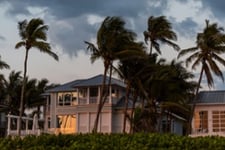 How long would your home remain comfortable and habitable in the event of a power outage in this summer’s brutal heat? The answer might depend on how well insulated your home is, according to a new report released by the U.S. Department of Energy. Analysis from the report, Enhancing Resilience in Buildings Through Energy Efficiency, finds that homes built to meet or exceed the 2021 International Energy Conservation Code (IECC) extend the habitability of buildings by 120 percent during extreme cold and up to 140 percent during extreme heat.
How long would your home remain comfortable and habitable in the event of a power outage in this summer’s brutal heat? The answer might depend on how well insulated your home is, according to a new report released by the U.S. Department of Energy. Analysis from the report, Enhancing Resilience in Buildings Through Energy Efficiency, finds that homes built to meet or exceed the 2021 International Energy Conservation Code (IECC) extend the habitability of buildings by 120 percent during extreme cold and up to 140 percent during extreme heat.
Study Overview
The study examines the ability of buildings, whether existing, newly constructed, or high performance, to withstand extreme temperatures and the associated impacts on occupants and property. Three separate regions considered hazard areas were included in the study: The Gulf Coast, the Pacific Coast, and the Great Lakes. The residential building types included were single family, multifamily apartments, and assisted living faculties.
Current code, for purposes of the study, is the 2021 IECC for single-family homes, while the model code for multifamily in this report is ASHRAE 90.1-2019. Two improved conditions that include passive energy efficiency measures are also analyzed. They are aligned with (1) the current model code requirements and (2) beyond code energy efficiency package based on the passive efficiency requirements specified in the Passive House standard (PHIUS 2021).
Findings
DOE’s results show that increased insulation extends the amount of time building occupants will remain comfortable indoors during extreme heat or cold that knocks out power.
Considering the example of a single-family home in Atlanta during a 7-day cold event, the typical existing building will remain habitable for 1.4 days, while a building built to the 2021 IECC will be habitable for 2.3 days, nearly a full day longer. However, a home built to Passive House Standards could maintain temperatures within the habitability threshold for a full 7 days – five times as long as the typical existing building. The Atlanta results also show that increasing passive efficiency will save 3.6 to 7.6 lives for the current code and beyond-code cases, respectively. Moreover, the benefit cost ratio calculation includes the stacked benefits associated with efficiency that go beyond energy-use reduction. The values show that improving the building envelope to meet or exceed the current code is cost-effective for new single-family construction and for most new multifamily buildings for the locations investigated.
The study also developed a methodology that lays the foundation for establishing a standardized analysis for quantifying the resilience benefits of improved building efficiency.
Why It Matters
The impact of climate change is being observed across the nation as the frequency and severity of extreme weather events increase. It’s not if an extreme event will occur, but when. Building homes to outdated codes is a recipe for calamity in the event of a power disruption during extreme weather and can not only threaten property but also impact occupant health and well-being.
Across the nation, there’s been a steady drumbeat of opposition to increased building codes from home builders, but that tide may be turning. Louisiana builders are now advocating for stronger building codes, hoping codes will lure top homeowners’ insurance companies back to the state. The Louisiana Homebuilders Association is now pushing for speedy implementation and enforcement of the 2021 IECC, which became effective in Louisiana on July 1 (though with amended insulation levels down to the 2009 IECC).
Conclusion
There’s strong justification here for municipalities and states to strengthen energy codes to better ensure public health, safety, and welfare. The business-as-usual approach to slow-walking tighter building codes just belies the reality that catastrophic weather events are increasing, which makes power disruptions more likely. Prioritizing the ability to shelter in place safely for longer periods of time is a move that is beneficial to all Americans in all regions of the country.
To read the full report, click here.





